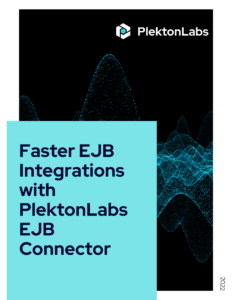So your API product is ready to be used. This means you can sit back and relax, right?
Wrong.
API products (like almost every other commodity) have a fixed lifespan with different stages. You can make sure users get the most out of the API product by nurturing it at every phase it passes. This is known as API lifecycle management.
Complete API lifecycle management offers the foundation on which you can build an API ecosystem, craft a digital strategy, and run a successful API program.
As newer ones get pushed out, older API products need to retire. As a result, there’s a lot of time and effort needed to make sure that your API gets the job done well. Sometimes this means upgrading or improving certain aspects of it while it is in use. At others, you leave it alone and let it do its own thing. If it isn’t broken, why fix it?
While no API product lasts forever, a few simple things can determine whether your API will be functional, useful, and have a nice long life. Here are the 5 stages of an API product’s lifespan and what each stage means for the product and its developer.
The Stages of an API Product’s Life Cycle
These stages make up an API product’s lifespan:
- Creation
- Publication
- Realization
- Maintenance
- Retirement
The creation stage happens after you envision your API product and what it will do. Designing, prototyping, and testing all occur during this phase. The product may even undergo overhauls, a change of interface, and even go through periods of non-responsiveness.
Even if the API has been completed, it still needs to be tested out and have any errors corrected. At this stage, the API still hasn’t been released for large-scale use and has issues that need to be addressed. Along with designing your API, you also need to have a business plan for it; one that makes sure that the money you spend creating and maintaining the API doesn’t go to waste.
Once the product is more or less ready, the API is published and put into production. It is now available and can be utilized by developers because at this stage it has a reliable user interface and is secure enough for general use.
But there’s more to it than just production. Once it has been published, the API also requires proper documentation, marketing, and sales pitching. All these things are crucial and determine whether it is suitable for the target customers.
Once the API product is made available, the creators need to focus on why it was made in the first place and what it currently does. This is known as the realization or growth stage. At this point, you can make changes to ensure that the API is doing what it was meant to do. You may change the interface to make it more user-friendly, tweak different features, and smoothen out any issues in its functionality.
‘Realizing’ an API essentially means making sure that it is either solving a problem or fulfilling a purpose. You need to focus on the metrics of your API and monitor constantly, seeing what needs to be improved and how it can function better. During this time you will see an increased number of users and overall growth among your customer base.
Once your API is performing as it should be, you can move on to maintenance and management. During this stage, you focus on making the most out of the product without making any major changes to it as the API is essentially mature. You may not even have to do anything to your API. At this stage, you can also monetize your APIs.
This is the peak period in the API’s life cycle since you just have to concentrate on improving its performance instead of spending money making any big changes. Moreover, it is during this stage that you can assess whether the API is profitable or not.
Eventually, the operational costs of the API product will start to exceed the profits it brings in. Maybe a better version of it is available on the market. Maybe the use of your API has decreased. Either way, its decline is a sign that it’s time for your API to go into retirement.
Once the API product has outlived its usefulness, it’s time to retire. It has reached the end of the API product’s lifecycle This isn’t necessarily a bad thing–it can actually reduce costs and free up resources that are better utilized elsewhere. This in turn gives you the incentive to create new APIs in the future.
Conclusion
Like any other product, each stage of the API’s life cycle requires time, effort, and patience. The ‘realize’ stage is essential because it determines the future of the product; if the right changes aren’t made, the API will not create any profit and will need to be retired quickly. In other words, it will have a much shorter shelf life. But a good API can live out a long lifespan before being retired, making room for newer, better APIs in the future.




